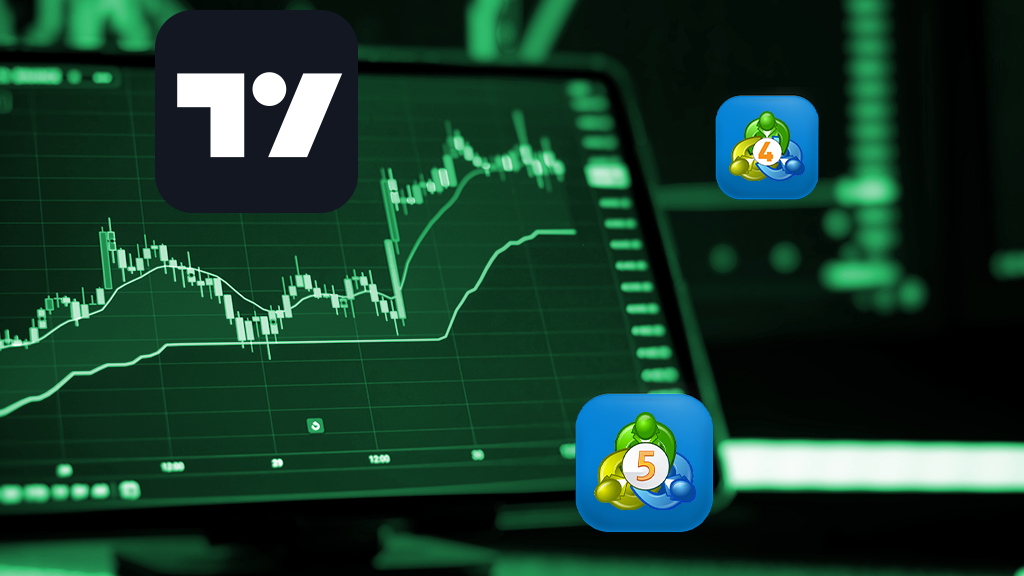Strategic Approaches to Index CFD Trading: Insights from Eightcap

This guide examines different index CFD trading strategies, discusses how Eightcap’s trading platforms and tools support these strategies, provides specific examples across MT4, MT5, and TradingView, and offers advice on selecting strategies based on current market conditions.
What types of index CFD trading strategies are there?
Understanding index CFD trading strategies:

- Trend Following: Trend following strategies involve identifying and riding prevailing market trends, whether upward or downward. Traders aim to enter positions in the direction of the trend and ride the momentum until signs of reversal appear. This strategy typically utilises indicators like moving averages, trendlines, and momentum oscillators to identify trends and potential entry/exit points.
- Mean Reversion: Mean reversion strategies operate on the principle that asset prices tend to revert to their mean or average over time. Traders identify overbought or oversold conditions in the market and anticipate a reversal to the mean. This strategy often involves using oscillators like RSI (Relative Strength Index) or Bollinger Bands to identify extreme price levels and execute trades accordingly.
Eightcap’s support for trading strategies:
Eightcap offers a range of trading platforms and tools designed to support various index CFD trading strategies:
- MT4 and MT5: Both MetaTrader platforms provide a suite of technical indicators and customisable charting tools. MT5 offers automated trading capabilities through Expert Advisors (EAs). Traders can implement trend-following or mean reversion strategies using these platforms, leveraging indicators like moving averages, MACD (Moving Average Convergence Divergence, and RSI.
- TradingView: Eightcap’s integration with TradingView offers traders access to a vast array of technical analysis tools and community-generated trading ideas. Traders can analyse indices, create custom indicators, and backtest strategies using TradingView’s intuitive interface.
- Acuity’s AI Economic Calendar: Eightcap’s partnership with Acuity provides traders with an AI-driven economic calendar, offering insights into macroeconomic events and their potential impact on market sentiment. Traders can use this tool to align their trading strategies with fundamental data releases and economic trends.
In-depth analysis of trading strategies:

Let’s examine specific examples of how trend following and mean reversion strategies can be applied to different indices across each platform:
- MT4 Trend Following Strategy: Using MT4, a trader identifies a bullish trend in the S&P 500 index (SPX500) using a combination of exponential moving averages (EMA) and the MACD indicator. They enter a long position when the shorter EMA crosses above the longer EMA, confirming the bullish trend.
- MT4 Mean Reversion Strategy: In MT4, a trader observes the FTSE 100 index (UK100) reaching oversold conditions based on the RSI indicator. Anticipating a reversal, they enter a long position, expecting the price to revert to its mean.
- MT5 Trend Following Strategy: Using MT5, a trader employs the Parabolic SAR indicator to identify a downtrend in the NASDAQ 100 index (NDX100). They enter a short position as the SAR points remain above the price, signaling continued downward momentum.
- MT5 Mean Reversion Strategy: In MT5, a trader monitors the DAX index (GER40) for overbought conditions using the Stochastic oscillator. When the Stochastic lines cross below the overbought threshold, indicating potential downward pressure, the trader enters a short position.
- TradingView Trend Following Strategy: On TradingView, a trader utilises the Ichimoku Cloud indicator to identify a bullish trend in the ASX 200 index (ASX200). They enter a long position as the price remains above the cloud, signaling upward momentum.
- TradingView Mean Reversion Strategy: Using TradingView, a trader observes the CAC 40 index (FRA40) trading near its upper Bollinger Band, suggesting overbought conditions. Anticipating a mean reversion, they enter a short position, expecting the price to retreat towards the middle band.
Disclaimer:
Trading Contracts for Difference (CFDs) carries significant risk and may not be suitable for all investors. Strategies outlined here are based on hypothetical historical data and market conditions. However, trading CFDs is inherently uncertain, and there’s no universal strategy for success. Markets can change rapidly, and past performance doesn’t guarantee future results.
Tips for choosing trading strategies:
- Assess Market Conditions: Consider the prevailing market environment, such as the presence of strong trends or ranging price action. Trend following strategies may be more suitable during trending markets, while mean reversion strategies may excel in range-bound conditions.
- Evaluate Risk Tolerance: Different strategies carry varying levels of your risk tolerance and potential returns. Trend-following strategies may entail higher volatility and drawdowns.. Choose a strategy that aligns with your risk profile and financial goals.
- Diversify Strategies: Diversify your trading strategies to mitigate risk and adapt to changing market conditions. Combining trend following and mean reversion strategies, or incorporating other approaches like breakout trading or volatility trading, can provide a well-rounded approach.
- Backtest and Demo Trade: Before deploying a strategy live, thoroughly backtest it using historical data to assess its performance under various market conditions. Additionally, practice executing trades using a demo account to familiarise yourself with the strategy’s execution and refine your approach.
- Stay Informed: Stay updated on economic news, geopolitical events, and other factors that may impact market sentiment and influence your chosen strategy. Utilise tools like Eightcap’s AI Economic Calendar to stay informed about upcoming events and their potential market impact.
- Monitor and Adapt: Continuously monitor the performance of your chosen strategy and be prepared to adapt to changing market dynamics. Adjust your strategy parameters or switch to alternative approaches if market conditions warrant.
In summary, while index CFD trading strategies present opportunities to potentially capitalize on market movements, it’s paramount to acknowledge the accompanying risks. Trading Contracts for Difference (CFDs) entails significant risk and may not be suitable for all investors.
Markets can exhibit rapid changes, and past performance does not ensure future results.
Traders must continuously adapt strategies as markets evolve, seeking independent financial advice and evaluating risk tolerance beforehand. When choosing a strategy, it’s essential to consider current market conditions and align it with individual risk appetite and objectives.
Guidelines for strategy selection encompass assessing market conditions, gauging risk tolerance, diversifying strategies, and staying abreast of economic news. Through Eightcap’s comprehensive resources and support, traders can navigate the dynamic landscape of index CFD trading with greater confidence and clarity.


